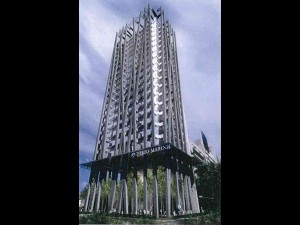Voluntary or mandatory green building measures?

TOKIO Marine Centre (Singapore) is the first office building which was awarded BCA Green Mark Gold Plus in 2008. Photo: Asean Energy Awards 2012
“I am impressed with the rapid development in your country. With so many high-rise buildings going up, are these buildings constructed based on environmental guidelines?”
This question was posed to me by one of the European delegates during the recently concluded 4th Philippine Energy Efficiency Forum at the SMX, sponsored by the European Chamber of Commerce of the Philippines (ECCP).
I replied that very few of these buildings conform to environmental guidelines.
Annual growth
This is quite disheartening and troubling, considering that based on government statistics, from 1998 to 2012, the average annual growth of the real estate retail, renting and business was 11 percent, while construction had 9-percent annual growth. This means only one thing: The construction trend will continue without much heed to green guidelines.
Article continues after this advertisementDuring the ECCP forum, I was fortunate to have been given a chance to present “Mandatory Green Building Measures,” a green building program of the International Finance Corp. (IFC) in collaboration with the Mandaluyong City local government and the Department of Public Works and Highways (DPWH).
Article continues after this advertisementGradual shift
The program has one very important message: We have to gradually shift from the present voluntary to the mandatory system of adopting green building measures if we are to reduce greenhouse gas emissions and improve resource efficiencies for buildings.
IFC’s green building program has commissioned WSP Group as its international consultant and the Philippine Green Building Initiative as the local technical consultant.
The green building program will be implemented at national and city levels. The market transformation is expected to result from recommendations that will be translated into local policies for Mandaluyong City for its proposed green building ordinance.
The mandatory green building measures will be a consequence of policies and a code for review and amendment of the National Building Code under the DPWH.
With mandatory green building measures in place, perhaps we can look forward to the day when we will have more green buildings.
Singapore is considered the green model in the Asean region with exceptionally energy-efficient buildings. It is now mandating existing public buildings to be certified Green Mark Gold Plus by 2020.
Tokio Marine Centre and Mapletree Business City Building, both from Singapore, are first runner-up and second runner-up, respectively, in last year’s Asean Energy Awards under the New and Existing Building category.
Tokio Marine Centre
This is the first office building which was awarded BCA Green Mark Gold PLUS in 2008. It is a 24-story office development in the Central Business District of Singapore.
The Centre has a sky terrace on the 21st level. A carbon-monoxide-free car park is on the third level with an escalator concourse linked to an adjacent building.
It has an automated car park designed to allow vehicles to be automatically carried and parked using vertical lifts and horizontal carts.
The design of the façade was inspired by the reinforcing relationship between individual stems of bamboo in a cluster that helps them grow tall and strong.
This translates to steel columns embedded in concrete, intersecting one another, to form the exterior structure of the Tokio Marine Centre, while at the same time providing solar shading for about 30 percent of the building.
For comments or inquiries, email [email protected]